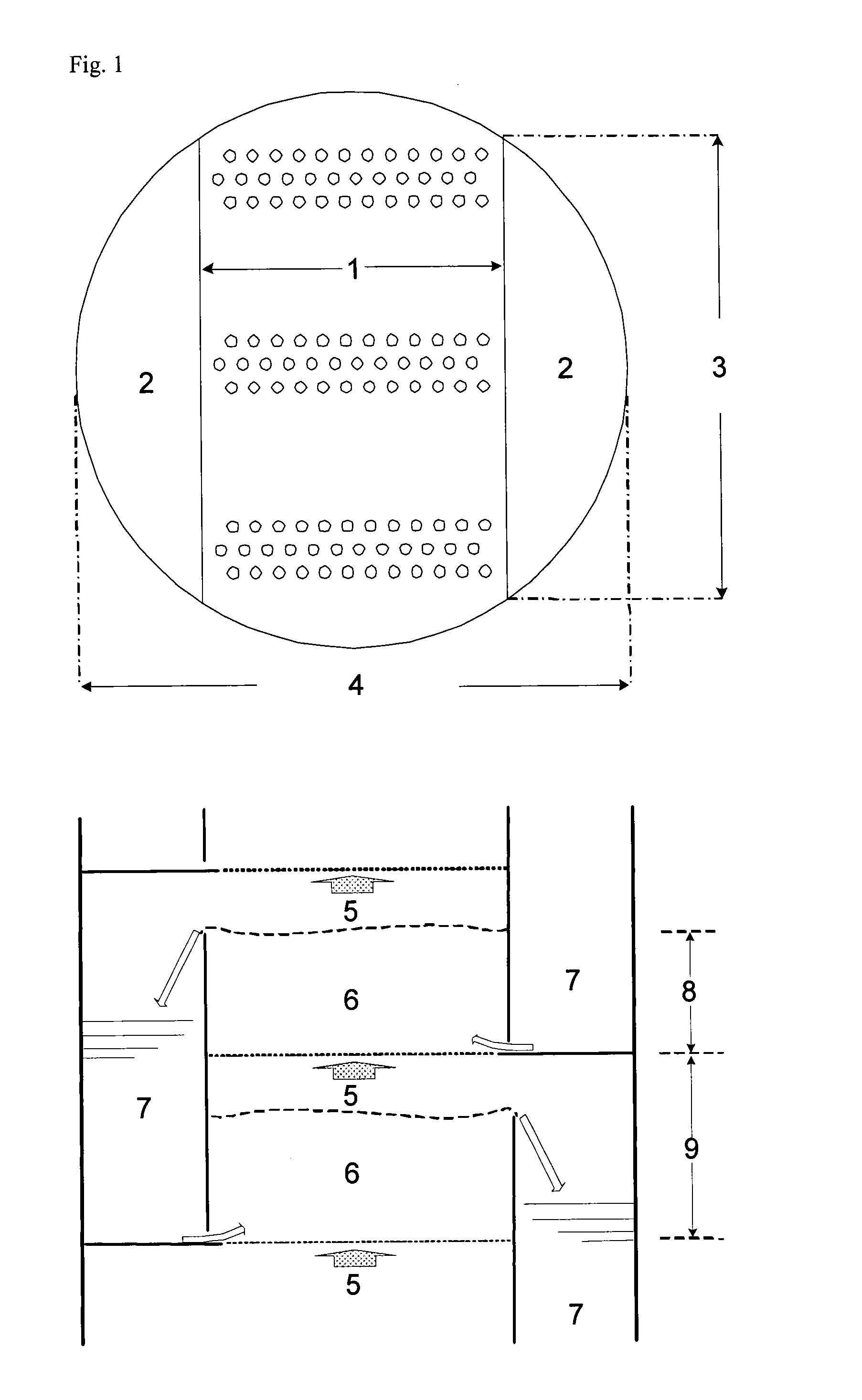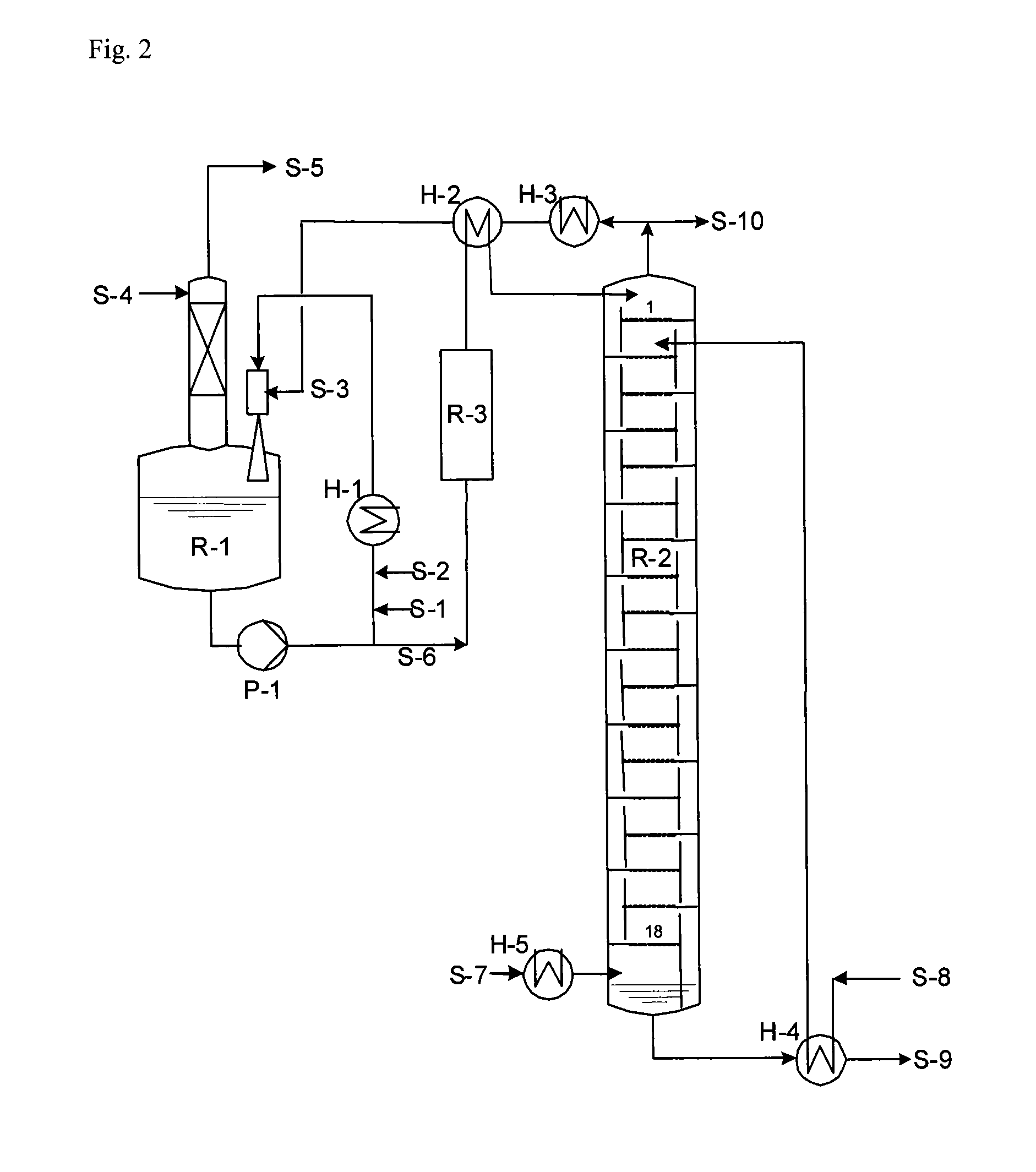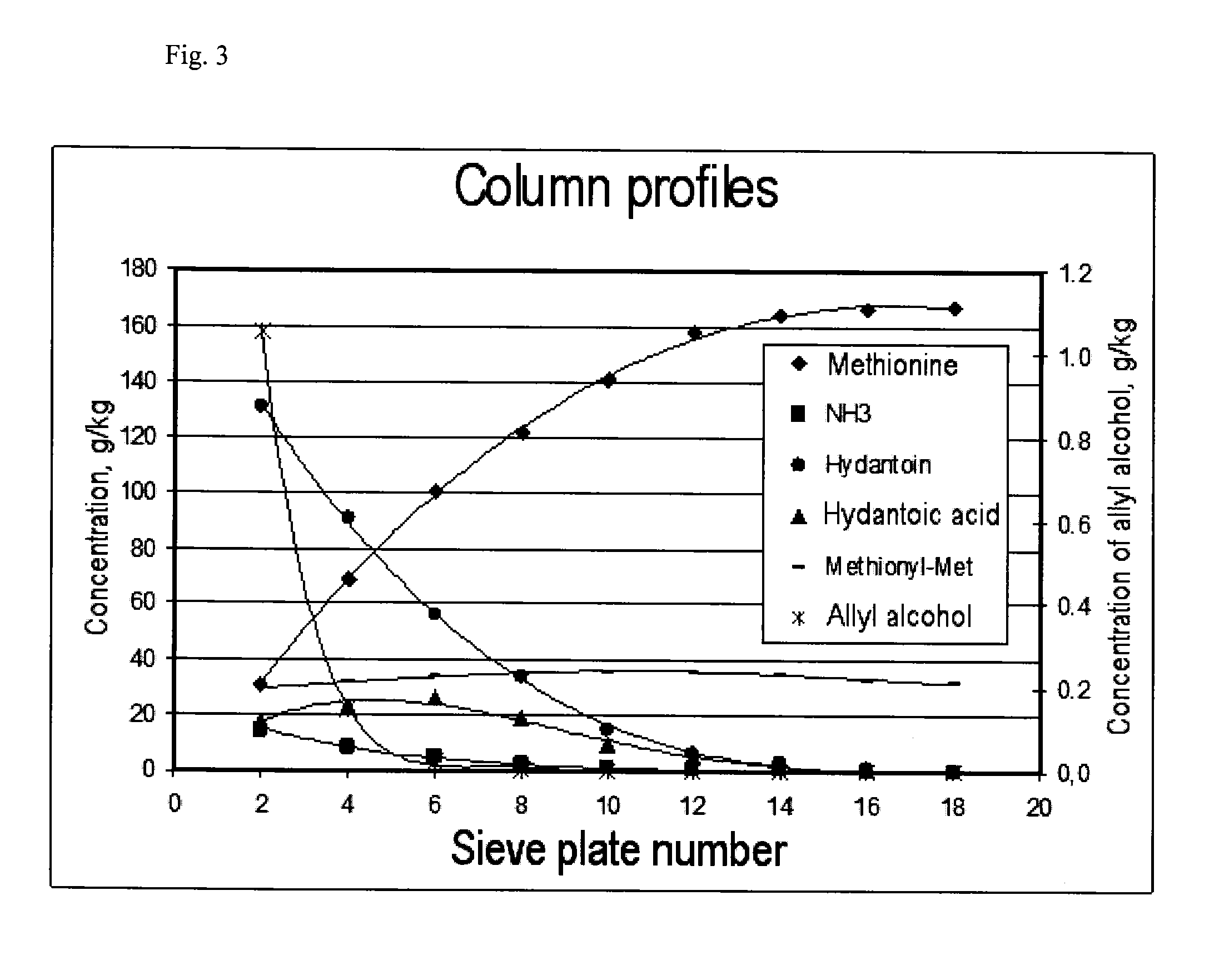Method for the conversion of methylmercaptopropionaldehyde formed from crude acrolein and crude methyl mercaptan
a technology of methylmercaptopropionaldehyde and crude acrolein, which is applied in the preparation of carboxylic compounds, separation processes, organic chemistry, etc., can solve the problems of shortening the service life, affecting the economic attractiveness of methionine production, and requiring the removal of unsaturated compounds
- Summary
- Abstract
- Description
- Claims
- Application Information
AI Technical Summary
Benefits of technology
Problems solved by technology
Method used
Image
Examples
example 1
[0106]FIG. 2 provides further explanation of the invention.
[0107]The production of hydantoin took place in the reaction system R-1. The raw materials HCN and MMP were mixed via the feed points S-1 and S-2 with about 20-times the amount of hydantoin reaction solution, which was circulated by pump P-1. Heat exchanger H-1 served for abstraction of heat and maintained the reactor contents R-1 preferably at a temperature of 100° C.-120° C. Alternatively, a premix of MMP and HCN or separately produced MMP-cyanohydrin could also be fed into the stream circulated by pump P-1. The resultant combined stream then served as the driving jet in a jet mixer, which brought the partially condensed low-boiling fractions (S-3) from the top of the reactive distillation R-2 intensively into contact with the hydantoin process solution and returned them to reactor R-1. Via stream S-5, which was washed with water (S-4) until NH3-free, a CO2-containing stream left the reactor R-1. This CO2 stream arose beca...
example 2
[0111]A sieve plate column with a diameter of 1 metre and 18 sieve plates as shown in FIG. 2 was used for continuous production of methionine. The following table shows the arrangement of the sieve plates, their spacing and weir heights:
Plate No.Weir height [mm]Plate spacing [mm]1 to 51501000 6 to 1250080013 to 187001000
[0112]Tank R-1 was operated with a hold-up of 3 m3, and the second reactor had a hold-up of 1 m3. Pump P-1 provided circulation of 42 t / h. At S-1, 442 kg / h HCN (16.92 kmol / h) and at S-2, 1688 kg / h MMP (16.24 kmol / h) were fed into this stream. Via S-3, a stream of 6063 kg / h with an NH3 content of 11.6 wt. % of condensates from the top of the reactive distillation was mixed into the circulated process solution. Excess CO2 gas (400 kg / h) left tank R-1 via a washing column, which was fed at the top (S-4) with 770 kg / h water, so that the waste gas stream was washed until NH3-free and could then be recycled.
[0113]By means of condenser H-1, the temperature at the outlet of ...
PUM
| Property | Measurement | Unit |
|---|---|---|
| Temperature | aaaaa | aaaaa |
| Temperature | aaaaa | aaaaa |
| Temperature | aaaaa | aaaaa |
Abstract
Description
Claims
Application Information
 Login to View More
Login to View More - R&D
- Intellectual Property
- Life Sciences
- Materials
- Tech Scout
- Unparalleled Data Quality
- Higher Quality Content
- 60% Fewer Hallucinations
Browse by: Latest US Patents, China's latest patents, Technical Efficacy Thesaurus, Application Domain, Technology Topic, Popular Technical Reports.
© 2025 PatSnap. All rights reserved.Legal|Privacy policy|Modern Slavery Act Transparency Statement|Sitemap|About US| Contact US: help@patsnap.com



